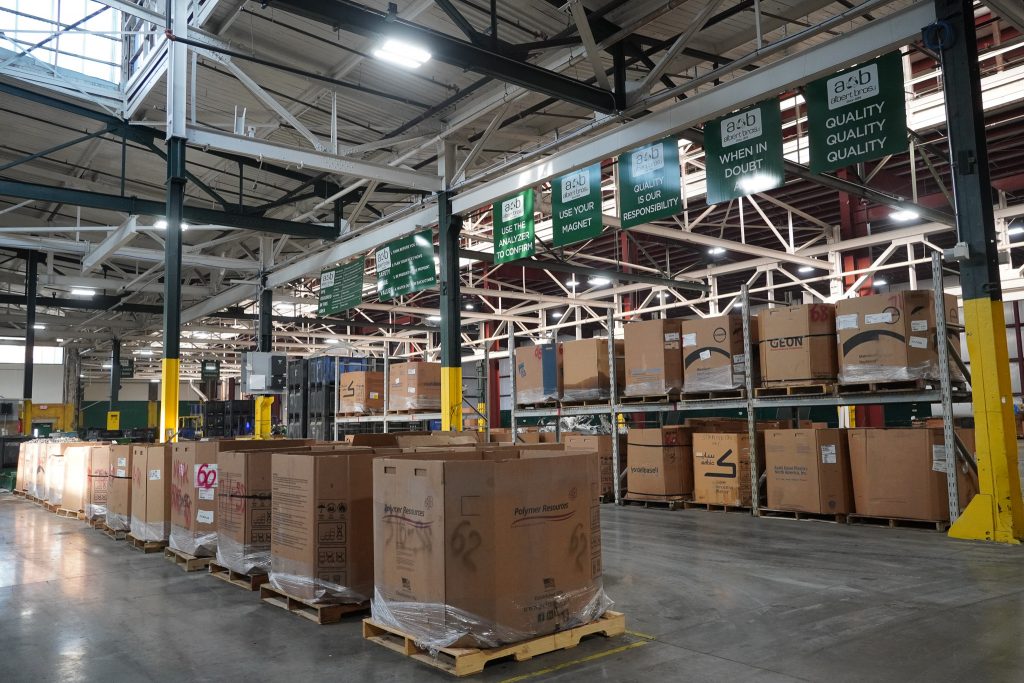Scrap metal recycling is no longer just a “green” option—it’s the backbone of modern manufacturing and infrastructure. In 2025, industries from automotive to aerospace are depending more than ever on recycled metals to manage costs, reduce carbon footprints, and keep supply chains moving. At Albert Bros., we’ve seen firsthand how scrap recycling keeps essential industries running, and we’re proud to be part of that cycle of renewal.

For a look back, visit our original Top Industries Relying Heavily on Scrap Metal Recycling, or explore more insights on the Albert Bros. Scrap Metal Blog.
The automotive sector continues to be one of the largest consumers of recycled metal. Nearly 75% of a vehicle’s weight comes from steel and aluminum, much of it recycled. From car frames to engine blocks and wiring, recycled metals are built into every stage of production.
Recycling not only helps automakers save money—it also supports sustainability goals. By using recycled steel and aluminum, manufacturers conserve natural resources and reduce the greenhouse gases associated with virgin metal production. The U.S. EPA notes that recycling metals like aluminum can reduce energy use by up to 95% compared to primary production.
At Albert Bros., our industrial recycling programs help auto manufacturers and suppliers maximize value from production scrap, while ensuring quality material goes back into the supply chain.
From skyscrapers to bridges, the construction industry is heavily dependent on scrap-fed steel and other recycled metals. Rebar, beams, fixtures, and piping all incorporate recycled content. With urban development surging and infrastructure upgrades underway across the U.S., demand for recycled steel and copper remains high.
Builders are also under pressure to meet green building standards like LEED certification. Using recycled metal supports those benchmarks while lowering overall project costs. Recycled steel, for instance, conserves about 1.4 tons of iron ore and 740 kilograms of coal for every ton reused (World Steel Association).
Technology cycles are shorter than ever, and that means electronic waste is piling up. Smartphones, laptops, and appliances contain valuable metals like copper, gold, palladium, and aluminum—all of which can be recovered and recycled.
According to the United Nations’ Global E-Waste Monitor, global e-waste reached record highs in 2024, and only about 20% was properly recycled. That gap represents both an environmental risk and an opportunity. By recovering metals from e-waste, recyclers prevent hazardous waste from entering landfills and return valuable materials to manufacturers.
Albert Bros. partners with businesses and municipalities to manage electronics responsibly, turning obsolete devices into sustainable resources.
Aerospace manufacturers rely heavily on high-strength, lightweight alloys such as aluminum, titanium, and nickel. These metals are not only costly to mine and refine but also critical for reducing aircraft weight and improving fuel efficiency. Incorporating recycled content helps lower production costs while aligning with industry-wide carbon reduction targets.
Organizations like NASA and major commercial airlines have committed to aggressive sustainability goals, and scrap recycling plays a key role. Recycled aluminum, for example, delivers the same strength and performance as virgin aluminum but with a fraction of the environmental impact.
From wind turbines to agricultural equipment, recycled metal powers the machinery that keeps our energy grid and industries running. Steel and copper are indispensable in everything from power plants to tractors. With global pushes toward renewable energy and electrification, demand for scrap-fed metals has surged.
The International Energy Agency projects that demand for copper alone could increase 30% by 2040 due to electrification. Scrap recycling helps meet that demand sustainably, keeping costs manageable and reducing reliance on imported raw materials.
With more than a century of experience, Albert Bros. has built relationships across industries that depend on reliable, sustainable recycling solutions. We offer tailored programs that include collection, processing, transparent reporting, and customer service rooted in trust.
Whether you’re an auto parts supplier, a contractor, or a manufacturer, our capabilities and retail services ensure your scrap metal is turned into value.